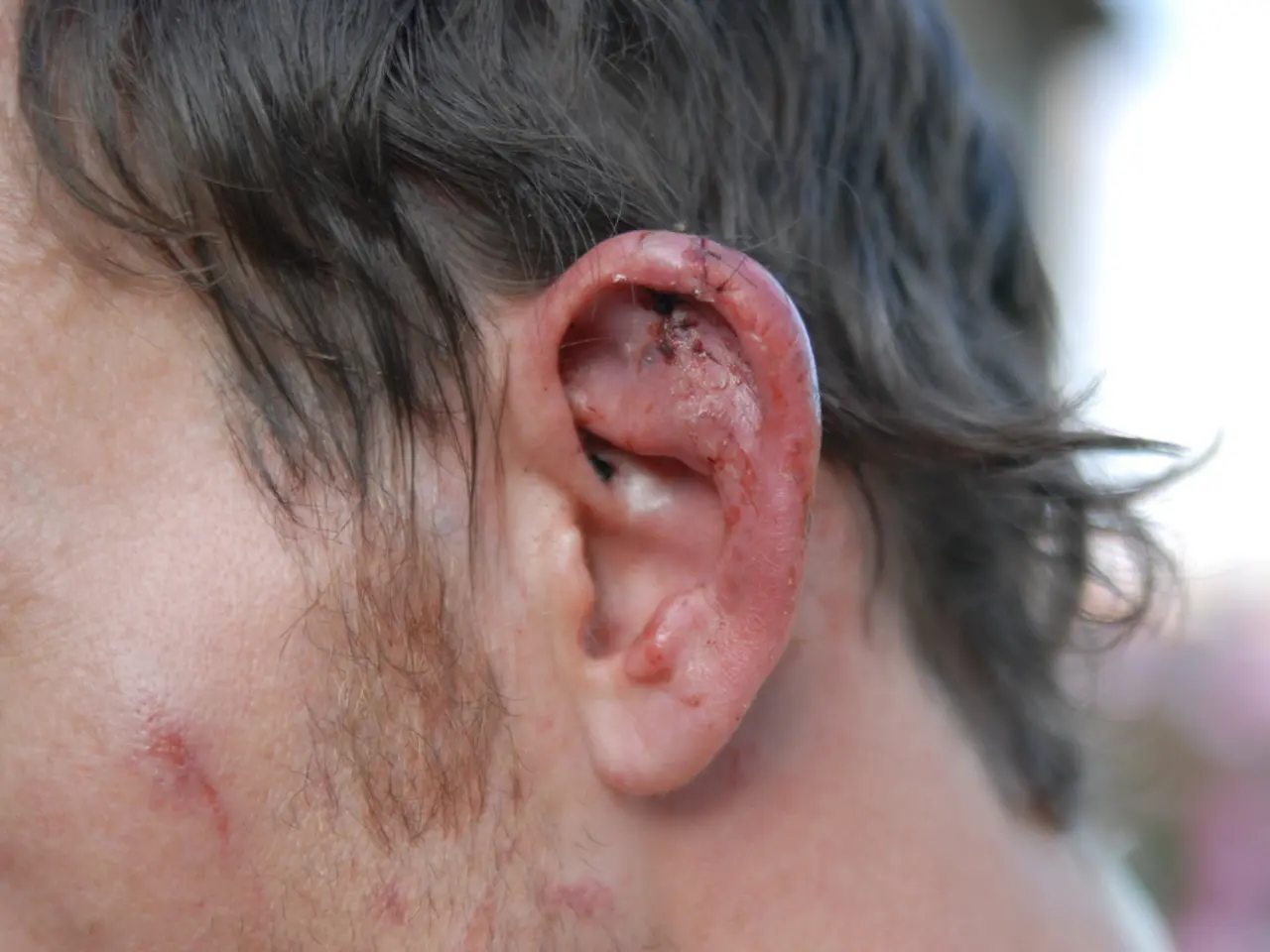Bleeding Internally: Signs, Remedies, and Potential Consequences
Internal bleeding, also known as hemorrhaging, is a serious medical condition that occurs when blood vessels within the body are damaged, causing blood to leak into the surrounding tissue or organs. This article aims to provide a comprehensive overview of internal bleeding, its symptoms, causes, diagnosis, and treatment.
The most common cause of internal bleeding is a traumatic injury, such as those resulting from car accidents, falls, or bullet wounds. However, it can also be caused by various other factors, including embolism, broken bones, aneurysms, surgery, ectopic pregnancy, and conditions like ulcers and tumors.
Diagnosing internal bleeding can be challenging and may require a thorough physical examination, questions about symptoms, and a review of the individual's medical history. Doctors may order blood and urine tests, diagnostic imaging tests like CT or MRI scans, an electrocardiogram (ECG), or X-rays to help in the diagnosis.
The symptoms of severe internal bleeding vary depending on the location and severity of the bleeding. Common symptoms include sudden and intense abdominal pain, swelling, or a feeling of fullness, along with bloody vomit or stools. Chest symptoms might include difficulty breathing, chest pain, and coughing up blood, which can indicate bleeding around the heart or lungs. Neurological symptoms, such as thunderclap headache, confusion, weakness on one side of the body, and disorientation, may occur due to reduced blood flow to the brain.
General symptoms of internal bleeding include pain or tenderness in specific areas, weakness or dizziness, a rapid heartbeat, nausea and vomiting, unusual bruising or swelling, pale or clammy skin, shortness of breath, blood in urine or stools, and symptoms such as light-headedness, headache, diarrhea, general weakness, unexplained exhaustion, muscle and joint pain, lower blood pressure than normal, confusion, memory loss or disorientation, numbness, vision problems, and abdominal or chest pain.
If left untreated, severe or chronic internal bleeding can lead to organ failure, seizures, coma, external bleeding, and eventually death. It is crucial to seek immediate medical attention if internal bleeding is suspected. Large, uncontrolled hemorrhages are life-threatening and are one of the leading causes of death worldwide.
Treatment for internal bleeding depends on its severity. For minor cases, rest and hydration may be sufficient. However, except for minor cases, internal bleeding usually requires immediate medical attention. Depending on the severity of the hemorrhage, surgery may be necessary to repair the blood vessel and remove excess blood. Treating moderate to severe internal bleeding often involves the administration of intravenous vitamin K, fresh frozen plasma, blood, and platelets. Doctors may also administer very high doses of complexes and compounds that stimulate clotting.
Preventative medications may be prescribed after the bleeding has stopped to reduce the chances of further injury and bleeding. Physical therapy and lifestyle changes, such as quitting smoking or drinking alcohol, may also be recommended.
Early identification and treatment of internal bleeding can significantly reduce the risk of complications and help a person make a full recovery. It is essential to be aware of the symptoms of internal bleeding and to seek immediate medical attention if they occur.
In addition to traumatic injuries, internal bleeding can be linked to medical conditions such as ulcers, tumors, and ectopic pregnancy. Diagnosis can involve questions about symptoms, a review of the individual's medical history, and various tests like blood and urine tests, diagnostic imaging, ECG, or X-rays.
The symptoms of severe internal bleeding can include sudden abdominal pain, swelling, bloody vomit or stools, chest pain, difficulty breathing, coughing up blood, and neurological symptoms like thunderclap headache, confusion, weakness, and disorientation. General symptoms might include pain or tenderness, weakness, a rapid heartbeat, nausea, unusual bruising, pale skin, shortness of breath, blood in urine or stools, and various other symptoms.
If left untreated, internal bleeding can lead to organ failure, seizures, coma, death, and other life-threatening complications. It's essential to seek immediate medical attention if internal bleeding is suspected, as large, uncontrolled hemorrhages can be fatal.
Treatment for internal bleeding depends on its severity, from rest and hydration for minor cases to surgery for more severe cases to repair the blood vessel and remove excess blood. Medications may also be prescribed to reduce the risk of further injury and bleeding.
Beyond medical treatments, preventative measures such as quitting smoking and alcohol consumption, physical therapy, and lifestyle changes can help manage and prevent internal bleeding in the future. Early identification and treatment can significantly reduce the risk of complications and help a person make a full recovery.
Moreover, following a health-and-wellness routine, which incorporates fitness-and-exercise, mental-health care, skin-care, and proper nutrition, can help prevent various chronic diseases like obesity, diabetes, crohns, alzheimers, copd, nsclc, hiv, bipolar, and depression.
Science continues to advance our understanding of internal bleeding, and workplace-wellness initiatives often include programs that educate employees on symptoms, prevention, and early detection of internal bleeding and other medical-conditions.
As a part of health-and-wellness, therapies-and-treatments such as CBD, which has shown promise in managing pain and reducing inflammation, may be used in combination with conventional treatments for internal bleeding.
Individuals participating in sports may be at a higher risk of internal bleeding due to injuries or traumas, making it essential to prioritize safety measures and seek medical attention promptly if needed. On the other hand, engaging in sports can also have numerous physical and mental health benefits.
Lastly, it's important to approach sports-betting responsibly, as stress and financial burdens can negatively impact a person's mental health and potentially lead to conditions like depression or anxiety. Maintaining a balanced, holistic approach to health and wellness is vital for overall well-being.




